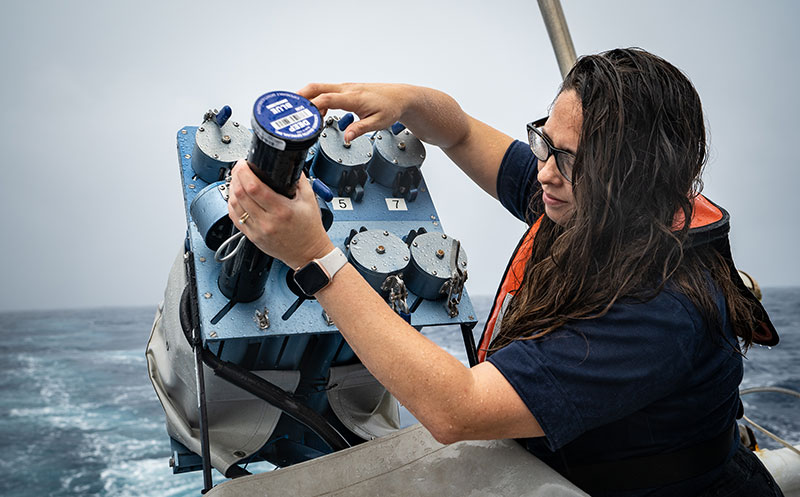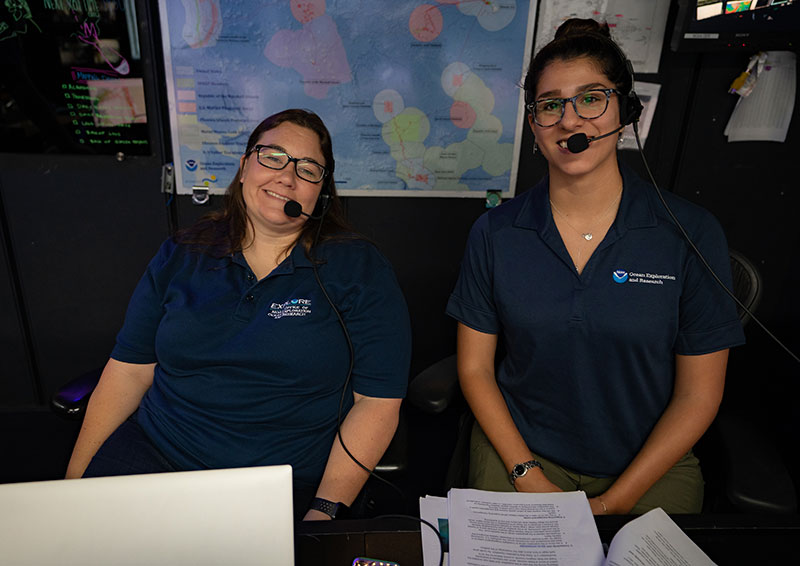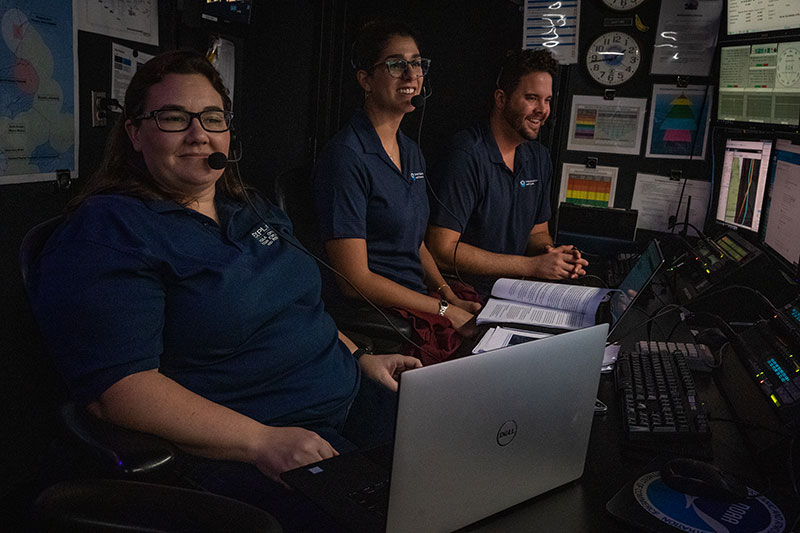
Date: November 14, 2019

Shannon Hoy, the expedition’s mapping lead, replenishes the expendable bathythermographs (XBTs) in the XBT auto-launcher. The XBTs collect temperature data about the water column and, when combined with historical salinity profiles from the World Ocean Atlas, allows the mapping team to generate sound velocity profiles that are applied to the multibeam mapping data. The XBT auto-launcher was designed by the NOAA Atlantic Oceanographic and Meteorological Laboratory and enables remote launches of XBTs by personnel on the ship or on shore. Image courtesy of the NOAA Office of Ocean Exploration and Research, 2019 Southeastern U.S. Deep-sea Exploration. Download larger version (jpg, 4.8 MB).
Another day, another day without a dive. But there was still a lot of fun to be had on board NOAA Ship Okeanos Explorer.
On this day, we continued to travel south in search of better diving conditions and, in addition to the ongoing mapping operations, dive planning, training, maintenance, and winterization activities, we were happy to conduct two live interactions. A live interaction is when the explorers on the ship connect with a venue on shore (e.g., an aquarium, a school, a partner organization) to talk about the expedition and topics of interest to the audience and to answer audience questions.

Stephanie Farrington and Kimberly Galvez smiled for the camera as they prepared for a live interaction with the Harbor Branch Oceanographic Institute (HBOI) during the 2019 Southeastern U.S. Deep-sea Exploration. Image courtesy of the NOAA Office of Ocean Exploration and Research, 2019 Southeastern U.S. Deep-sea Exploration. Download larger version (jpg, 5.5 MB).
The first live interaction was with the Harbor Branch Oceanographic Institute (HBOI) at Florida Atlantic University. During this interaction, a group of 13 (scientists, campus volunteers, staff, and members of the public) in the exploration command center at HBOI called in to hear from science co-leads Stephanie Farrington (a biological research specialist at HBOI) and Kimberly Galvez. Topics of discussion included previous dives, observations made (like the Lophelia reefs seen on Dive 06), and plans for future dives.
The second interaction was with a group of 15 marine science students from the Peddie School, students of a former NOAA Teacher At Sea on the Okeanos Explorer. For this interaction, Mike White, expedition coordinator, joined in the discussion and lively Q&A about the research being done and experiences at sea.

Stephanie Farrington, Kimberly Galvez, and Mike White enjoying the discussion with marine science students at the Peddie School during the 2019 Southeastern U.S. Deep-sea Exploration. Image courtesy of the NOAA Office of Ocean Exploration and Research, 2019 Southeastern U.S. Deep-sea Exploration. Download larger version (jpg, 4.8 MB).